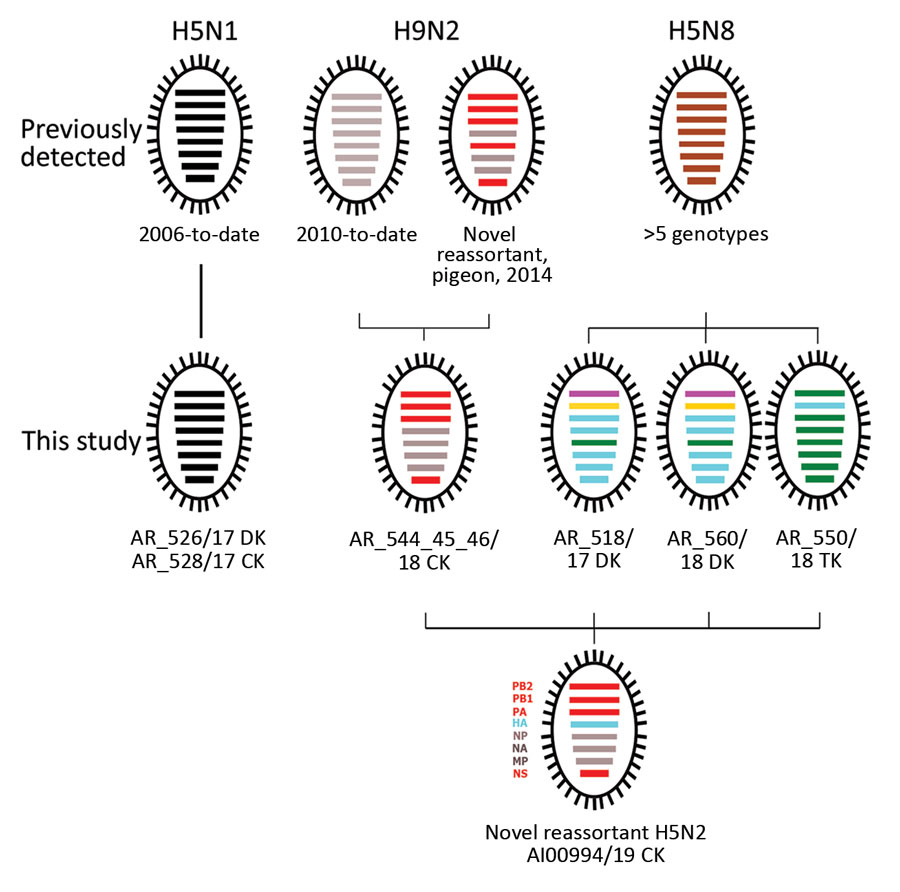Volume 26, Number 1—January 2020
Dispatch
Novel Reassortant Highly Pathogenic Avian Influenza A(H5N2) Virus in Broiler Chickens, Egypt
Figure 1

Figure 1. Genotype and reassortment analyses based on full-length genome sequences of avian influenza viruses in Egypt previously detected and those identified in this study. Colors indicate grouping of segment origin according to phylogenetic analyses (Appendix 1 Figure): highly pathogenic avian influenza (HPAI) H5N1 2.2.1.2 virus from Egypt (black); H9N2 subtype from Egypt circulating in chickens since 2010 (gray); H9N2 subtype from Egypt first detected in pigeons in 2014 (red); HPAI H5N8 viruses previously detected and circulating in Egypt (brown; different genotypes); Polymerase basic (PB) 2 segment most closely related to an H3N6 virus from Bangladesh (purple); PB1 segment most closely related to an H7N7 virus from Georgia (yellow); segments most closely related to H5N8 viruses from China (blue) or Russia (green).